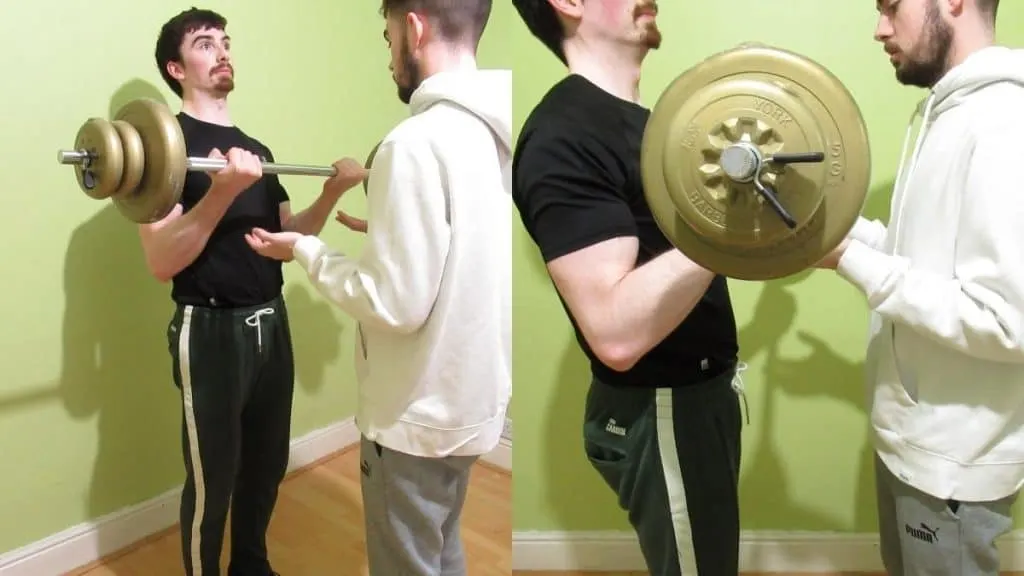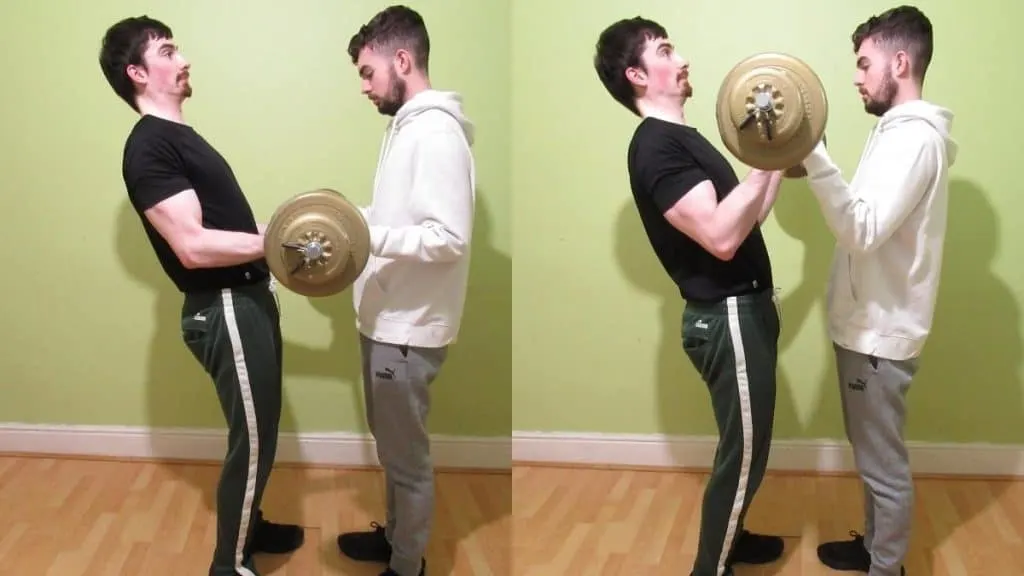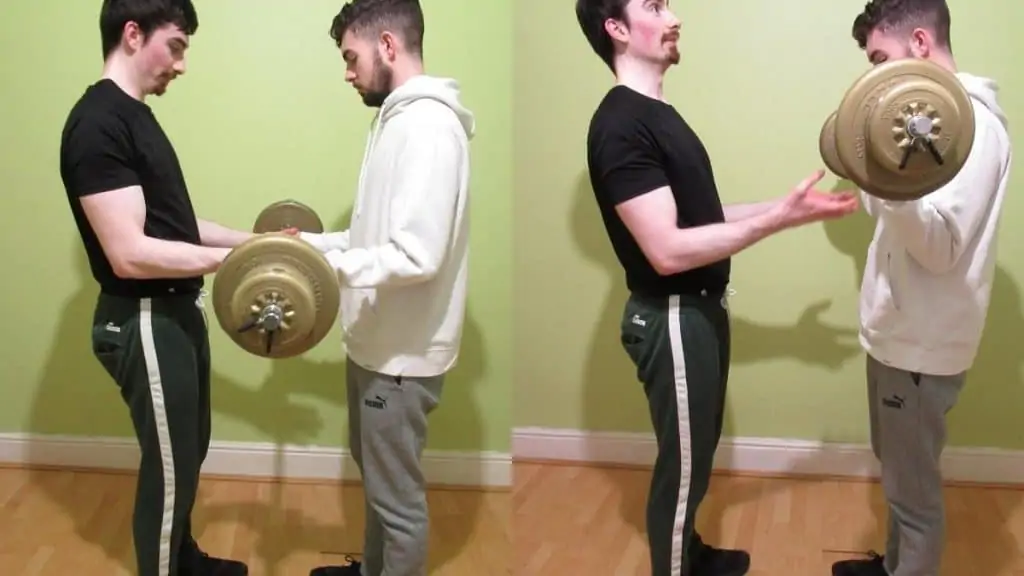Buddy curls blast the bicep muscle with what is essentially one very long rest-pause set. The idea is to pick a weight that you and your training partner both feel comfortable with. If in doubt, use a light bar so that your biceps don’t burn out too soon.
From there, you begin by performing one rep each. Then you increase the requirements to two reps each on the next set, and you essentially keep upping the target reps until you get to 10-12 reps per set. At this point, you can end the exercise or, if you’re really hardcore, you can work your way back down the pyramid, so 12 reps each, 11 reps each, 10 reps each, etc.
Related: Chain curls
Buddy curls exercise details
- Main Muscles: Biceps brachii
- Secondary Muscles: Brachialis, brachioradialis, forearm flexors
- Exercise Type: Strength
- Exercise Mechanics: Isolation
- Difficulty Level: Advanced
- Equipment Needed: Barbell, weight plates
How to do buddy curls
- Choose a weight that you and your training partner can easily lift.
- Perform one rep, hand the bar to your partner, and let them do one rep.
- Take the bar off them, do two reps, give the bar back to them, and let them do two reps.
- Repeat this process until you’ve both done a top set of 10-12 reps.
- Follow the pyramid back down to one rep for extra intensity.
Pros and cons of buddy curls
Buddy curls have been around since bodybuilders had training partners, which is a long time. Due to the sheer intensity of the exercise, you’re best off doing them after you’ve developed a solid foundation of mass. Otherwise, you might overtrain or distract yourself from more important tasks, such as progressively adding weight to the bar.
Pro: Enormous bicep pump

Buddy curls feel easy at first—suspiciously easy.
But when you get halfway through this giant set, your biceps will really start to feel the burn. And by the time you do your final rep, your arms will be screaming for you to stop. That’s how intense this exercise can get if you do it correctly.
The trick is to select a weight that both you and your gym buddy can handle, meaning that you both also need to be similarly matched in bicep strength. If you pick a weight that’s too heavy, then your biceps will fail before getting a good pump (if you want to lift heavy, do a different exercise).
On the other hand, if you choose a weight that’s too light, then your biceps will be left understimulated. So if you realize that the resistance isn’t challenging enough halfway through, then you can simply do more reps or repeat the pyramid without a rest.
You can also work your biceps isometrically by holding the bar in the same position for increasing periods of time.
Pro: Training partner motivation

Most of us are stronger than we think. This is especially true when you have a trusted training partner to give you encouragement. Simply knowing that someone else cares about your results can make you push yourself harder and help you to grind through those challenging final reps.
Similarly, knowing that you need to keep cranking out those buddy curl reps for your training partner is highly motivating. After all, if your biceps give out way before his, then it defeats the purpose of the exercise for him. Do you really want to be responsible for forcing your friend to lose their pump?
Anyway, if your biceps can’t handle it, then your pal could just do extra reps while you recover. So even if there are differences in strength, you can still work around them if you’re smart. For example, if you’re significantly stronger than your friend, you could do twice the number of reps so that you both fatigue at similar times.
Con: Lack of progressive overload

This is a problem with inverted curls as well. Because you’re doing so many reps, it’s hard to add weight to the bar on a regular basis, especially when you’re dealing with a relatively small muscle group like the biceps.
As such, buddy curls should be reserved as a finishing exercise or a drill that you do every once in a while to shock your biceps with a novel stimulus (perhaps at the end of a training cycle when you’ll have plenty of chance to recover afterward).
Don’t rely on buddy curls to build mass because there are better exercises for that. Decline bicep curls are one such exercise, but there are also many more (we have over 150 guides for biceps alone on our site).
In conclusion

Buddy curls are a great exercise to do if you want to burn out your biceps after a heavy arm session. They’re also a fun way to introduce some lively competition into your workout—who’s biceps will give out first?
Just make sure to select a reasonably light weight so that your biceps don’t fatigue prematurely, something which would defeat the purpose of this pump-inducing exercise.

